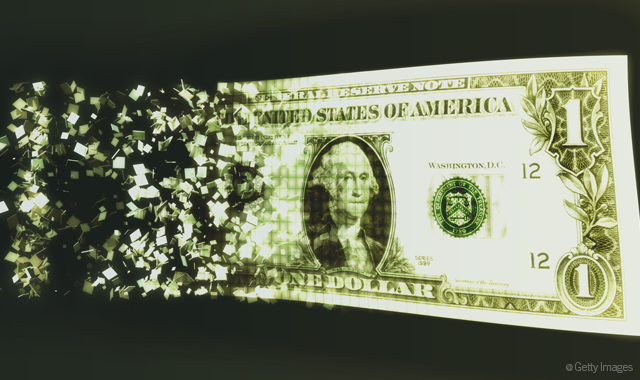State technology subsidies: Dentistry’s best-kept secret
Why would a five-provider dental practice throw away over $300,000 in state subsidies that they were eligible to receive? Probably because they weren't aware of a federal program administered by individual states that has been around for five years now and has distributed over $30 billion to mostly medical practices while many dental practices have stood on the sideline.

Why would a five-provider dental practice throw away over $300,000 in state subsidies that they were eligible to receive? Probably because they weren't aware of a federal program administered by individual states that has been around for five years now and has distributed over $30 billion to mostly medical practices while many dental practices have stood on the sideline.
In this same scenario a group practice of just 15 dentists could be eligible for a subsidy of almost a million dollars. And if any of your eligible dentists haven't started the program by the end of 2016 it will be too late. Do I have your attention now?
Known as the Electronic Health Records Incentive Program, the purpose is to provide financial rewards for practices and groups that have purchasing certified software systems and used them in a “meaningful way” to improve patient care and outcomes While this federal program has been wildly popular in the medical world, it doesn't seem to have had the same visibility or understanding in the dental industry.
I think one of the reasons is because there has been a lot of misinformation put out there regarding this program. Having personally been involved with this program since its inception I can tell you that, if eligible, a practice would be crazy not to at least understand it better and see if they can take advantage of the incentive dollars that are available. With all the confusion surrounding this program I thought it would be worthwhile to clarify a few things. It's about time that dental practices and groups demand their fair share of a program that is in reality funded by your tax dollars.
How does it work?
There is a lot of incentive money to go around and there are a couple of main requirements to get you in the game:
1) At least one dentist in your practice must have 30 percent or more Medicaid patient visits during one 90-day period in 2015. Some states will also allow you to substitute a 90-day period in 2016.
2) You must either purchase a certified EHR, or upgrade your present EHR to meet certified testing requirements by the end of 2016.
So, the light at the end of the tunnel is that if you meet the above requirements then you are eligible to receive up to $63,750 per eligible dentist. Payments are spread out over a six-year period with the first year payment being $21,250 per dentist.
Continue to the next page to read about how it can all get a little tricky...
Here's where it gets a little tricky: To receive the first-year $21,250 per dentist, you need to attest that you purchased or upgraded to certified software, provide patient volume documentation and jump through a few beurocratic hoops along the way. Then to receive the $8,500 per year for the next five years you must show what's known as Meaningful Use of the EHR each year.
Meaningful Use is just what it says: The use of the EHR in a "meaningful" way as described by various criteria set out by the ONC (Office of the National Coordinator). And the thing to be aware of is that these sets of criteria can change periodically. It’s important to fully understand the changing rules and regulations of Meaningful Use. And so far, in five years of the program we’ve had three different sets of criteria already… so it can be somewhat of a moving target with various hoops to jump through along the way
Related reading: 6 myths and facts about electronic health records
Some practices and groups were misled
As I have had more and more dental practices over the past couple of years coming to me for help I've also had the opportunity to learn their stories. If you are a practice that has already taken advantage of the first year $21,250 payout per dentist but don't know how to get the additional $42,500 per dentist moving forward or were not even aware that you are leading thousands on the table I would like to give you a little insight into what has been going on.
I've heard from numerous dental practices that had been approached sometime over the past five years by individuals or companies representing themselves as “experts” in the Meaningful Use program. In some cases they were successful in obtaining first-year payouts for the practices. But this is where things came to a halt. With changing federal requirements and more work to get the money many of these “consultants” just took their fees and went away, either not interested in helping their clients obtain the rest of the money or, worse, not telling their clients that they were even eligible for another $42,500 per dentist.
The good news is that if you are in this situation it's not too late to apply for and obtain the additional money if you are still eligible. The thing that's important to remember is that to be eligible for the additional $42,500 per dentist you must use the software in a "meaningful" way (Meaningful Use) and report on these metrics is a prerequisite to getting paid. If you're interested in more information regarding the details of this program and/or see if you are eligible please visit my website at dentalsoftwarecompare.com. Click on “Check your eligibility”.